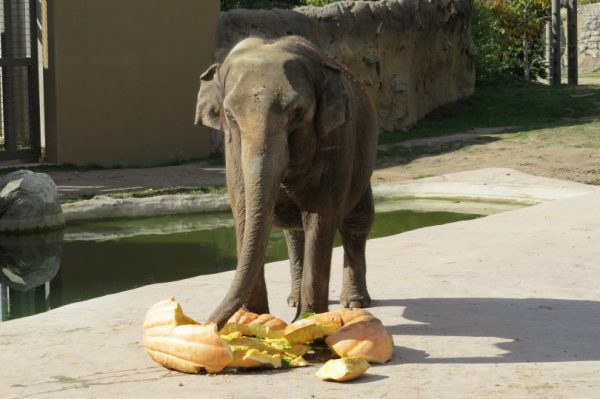
When you visit the zoo, you visit the animals and take pictures with them, but you never really think about what happens to them later in their lives.
Just like us, animals get older and have to be taken care of. There are several animals at the Denver Zoo that you don’t get to see when you visit because they are under special hospice care until they pass away.
The Denver Zoo has more than 4,200 animals. The majority of them live their entire lives there.
Each animal gets a monthly health screening. But as animals get older, the way zookeepers care for them changes.
“We’re really monitoring a lot of different things about their behavior, about their attitude, how well are they eating, what’s their activity level,” zoo spokesman Brian Aucone said.
Some animals are easy. Take Verde, a South American Quetzal bird. for example. The zoo retired her about 10 years ago when they thought she was getting too old. She has been living in one of the zoo staff offices ever since.
“She started having some health problems, losing her eyesight, but she is still a very healthy bird,” her keeper said.
Verde is now 31 years old and is thought to be the oldest Quetzal alive. Their average lifespan is about 20 to 25 years.
“She’s grandma,” her keeper joked. “We give her a very calm, relaxed life.”
Not every animal ages as gracefully as Verde though.
Rizzo, an 11-year-old pygmy marmoset, is about as old as her species can get.
“She’s super feisty. She’s a little old lady, but she has a lot of spunk,” associate veterinarian Betsy Stringer said.
Rizzo was showing signs of respiratory failure so she was admitted to the Denver Zoo animal hospital for treatment. She has spent many of her senior years in the hospital, hoping to fight Mother Nature with medicine.
There comes a time in every animal’s life, though, where medicine just isn’t an option.
“We love these animals from birth until death,” Stringer said. “And we care for them until their final days.”
That’s where Denver Zoo’s beloved elephant Dolly spent the end of her life. She was a patient in the zoo’s hospice care for weeks leading up to her death in September.
“I have to keep reminding myself that as I get older, they get older,” Dolly’s zookeeper Barb Junkermeier said in August. “I always want to keep them little and young, but OK, reality check. She’s getting older.”
Dolly died at the age of 52, which is about five years older than an elephant’s life expectancy. Dolly was the 10th-oldest elephant in North America.
Junkermeier worked with Dolly every day for almost 20 years. She said she could tell right away when Dolly needed end-of-life care. Dolly stopped eating normally and stopped socializing.
In hospice, the zookeepers give patients a lot more attention than the other animals. They get a lot more health screenings, medicine, supplements and treats. Zoo staff just does whatever they can to keep hospice animals as comfortable as possible.
“You just sit there and bawl for a couple days,” Junkermeier explained.
Zookeepers said taking care of a dying animal is the hardest part of the job. But they want visitors to know that they do it with passion, they do it with love, and they do it until the end.
“We are doing everything in our power to give them the best care. We never take anything lightly when it’s time to make that decision. It’s the hardest thing a zookeeper could ever do,” Junkermeier said.
As hard as it is, life is a circle. Right as one ends, another begins.
“When Whimsy was born we were all very excited to have this new gorilla in our group and she’s super fun to watch grow up,” Stringer said.
Whimsy is an 8-month-old gorilla. She is just one of several babies growing up at the zoo. One day they will have babies of their own, keeping the circle of life going forever.
According to Denver Zoo, about 30 percent of their animal population is considered geriatric.
Here are some of the oldest animals at Denver Zoo and the average life expectancy:
- Natasha the snow leopard, 15 years, 4 months (14.3 years)
- Rudy the eastern black rhinoceros, 23 years (18.3 years)
- Groucho the Asian elephant, 45 years, 7 months (unknown)
- Otto the North American river otter, 18 years, 3 months (11.9 years)
- Hank the red-capped mangabey, 22 years, 10 months (17.8 years)
- Tega the maned wolf, 13 years, 7 months (12.3 years)
- Maude the harbor seal, 41 years, 2 months (24.1 years)
- Robin the harbor seal, 37years, 6 months (24.1 years)
- Dikembe the giraffe, 22 years, 7 months (13.5 years)
- Kipele the giraffe, 23 years (19.5 years)
- Cliff the Rocky Mountain big horn sheep, 14 years, 3 months (6.5 years)
- Ridge the Dall’s sheep, 15 years, 2 months (unknown)
Complete Article HERE!
